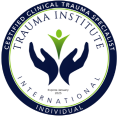If my articles over the last few weeks have piqued your interest but you’re still not sure how EMDR Therapy and our EMDR Intensives really work, this read is going to clear up any questions!
Contrary to what may seem like miraculous results, we can definitively confirm that it’s not magic… It is pure science.
Understanding the Science Behind EMDR Therapy as an Approach to Improving Quality of Life
While EMDR Therapy has only become more publicly recognized in the last few years, Eye Movement Desensitization and Reprocessing have been around for over 30 years, with the origins of this mode of therapy attributed to Dr. Francine Shapiro.
Cue the quick history lesson… After noting that eye movements had a desensitizing effect on her own negative emotions, she conducted studies to test what she called Eye Movement Desensitization (EMD). The results of the study indicated that “a single session of the EMD procedure successfully desensitized the subjects’ traumatic memories and dramatically altered their cognitive assessments of the situation.”
By 1989, there were multiple studies being performed by various experts with positive results. Shapiro soon changed the name to Eye Movement Desensitization and Reprocessing to indicate the cognitive changes (reprocessing) that were a result of the treatment. By 1995, a professional association was founded, a book of procedures was published, and it was no longer widely considered “experimental”.
Bringing it right back to more contemporary times, a 2019 study on the status of EMDR in the treatment of PTSD, 30 years after its introduction reveals that “currently, there are more than 30 randomized controlled trials… demonstrating the effectiveness in patients with this debilitating mental health condition, thus providing a robust evidence base for EMDR therapy as a first-choice treatment for PTSD.” However, EMDR Therapy has been shown to be effective in an array of areas outside of PTSD, with studies on the efficacy of EMDR for Executive Coaching, Reducing Presentation Anxiety, Generalized Anxiety Disorder, Peak Performance, Enhanced Performance, Elite Athletes and the list goes on.
The basic premise is that as we encounter different experiences, our brain develops neural pathways and stored memories that translate into behaviours. In a challenging, traumatic, or adverse experience, this process is frozen and the memories are linked to troubling images and negative behaviors. What intercepts this process, is the science behind EMDR Therapy. We can essentially rewire or reset the brain to reprocess these memories, and associate more positive behaviours with our thought patterns. Magic! No, Science! It sure can feel like magic though and that is the science behind EMDR Therapy.
But what does moving my eyes or handheld buzzers have to do with rewiring my brain?
Good question! Eye Movement Desensitisation and Reprocessing tap into mechanisms similar to REM (Rapid Eye Movement) sleep, a delta wave state. During EMDR, as the client focuses on the memory, the therapist guides the client’s eye movements from left to right, mirroring the way eyes shift in dreams. EEG tracings reveal that bilateral stimulation, induced by tapping, sounds, or light, triggers natural synchronization of cortical activity in memory regions. This, much like slow-wave sleep, temporarily calms the overstimulated amygdala, aiding access to and reprocessing of information and memory, neutrally.
What sets the tidylodge approach apart, is more than just its intensive accelerated model. It integrates evidence-based techniques and modalities into the framework, enhancing effects based on the client’s goals. This approach combines desensitization to alleviate unpleasant sensations with the transformation of these sensations into positive cognition and emotions. This integration makes the tidylodge approach unique, offering a comprehensive strategy for achieving desired therapeutic outcomes.
So, where do EMDR intensives come in?
Well, this is where it gets really exciting! The science behind EMDR Therapy is rooted in neurobiology and neuroscience, focusing on how the nervous system processes traumatic memories. This approach is based on the Adaptive Information Processing (AIP) model, which posits that unresolved traumatic memories can lead to distressing symptoms. EMDR’s bilateral stimulation techniques are thought to facilitate memory reprocessing, helping the brain integrate and adaptively store these memories, ultimately reducing their emotional charge and alleviating associated symptoms.
This can work well for complex everyday situations where we are feeling that our needs are unmet or we are not living our life to the fullest. EMDR Therapy typically consists of 8 phases: initial history discovery and treatment planning, preparation, assessment, desensitization, installation, body scan, closure, and re-evaluation. Experts have noted that it usually takes from six to eighteen sessions to be completely effective.
However, for serious businesspeople, executives, homemakers, or those who cannot dedicate the time to a prolonged process, EMDR intensives are designed to provide just as much benefit as weekly sessions in a significantly condensed time – i.e. Three to seven full days with a pre-and post-interview for preparation and follow-up. As EMDR results are permanent, and an EMDR Intensive speeds up the brains AIP as previously mentioned and those results stick for years and a lifetime, rapidly in the case of an EMDR Intensive (see The EMDR Revolution: Change Your Life One Memory at a Time – The Client’s Guide, Tal Croitoru).
At tidylodge, we’ve taken this even further to combine the benefits of EMDR neuroscience, executive coaching, and evidence-based psychotherapy to produce transformational results in just a few short days. Maybe a little bit of magic involved here, but only the kind that sees our clients walking away with life-altering results, that have seen them skyrocket to success in their chosen careers and personal lives.
That’s the neuroscience behind EMDR!
Now that I’ve broken it all down for you, there should be no lingering question as to why it’s imperative to take the opportunity to reset your brain for unmatched success and optimal living.















